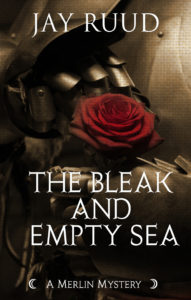Tulip Fever
Justin Chadwick (2017)
[av_image src=’http://jayruud.com/wp-content/uploads/2014/08/Tennyson-180×180.jpg’ attachment=’77’ attachment_size=’square’ align=’left’ animation=’left-to-right’ link=” target=” styling=” caption=’yes’ font_size=” appearance=’on-hover’]
If you have a lush period piece with gorgeous costumes and you get Sir Tom Stoppard, a four-time Tony Award-winning playwright who also happens to have an Academy Award for penning Shakespeare in Love, to write your screenplay, and you fill your cast with Oscar-winners Alicia Vikander, Christoph Waltz and Judi Dench, why does your movie end up with an 11 percent rating on RottenTomatoes.com?
A good part of the reason may have to do with a troubled history. Justin Chadwick’s Tulip Fever was originally scheduled to appear two years ago. The Weinstein Company then set its release for July 2016, moving it to February 2017 as that date approached, then bounced it to August, and finally settled on September 1 for a limited release date for the film. But with that limited release they decreed that no review of the film would be allowed until 1 p.m. on Friday, effectively ensuring that no reviews of the film would appear before it showed in theaters. When those reviews finally did appear, it was as if critics, sensing a disaster in the works, went for the film like sharks smelling blood in the water. It’s too bad. The movie is actually quite enjoyable.
The story, set in a beautifully realized seventeenth-century Amsterdam, focuses on an orphaned girl named Sophia (Vikander), raised in the charity of Saint Ursula’s Convent, who agrees to marry a wealthy merchant, Cornelis Sandvoort (Waltz), who is a childless widower. Sandvoort has reached a stage in life where he wants to leave something of himself behind, and specifically wants that to be a son who can inherit his wealth and his estate. And for that he needs a fertile young bride. Problem is, he can’t seem to get her pregnant, despite, or perhaps because of, his regular somewhat preposterously mechanical love-making, coupled with lots of prayers for a fruitful outcome. In the meantime, the Sandvoorts’ maid, Maria (Holliday Grainger of Cinderella) is carrying on her own lovemaking with the local fishmonger Willem (Jack O’Connell of Unbroken), and doing it a lot more successfully and with more fun.
After three years of trying unsuccessfully to father a child with his beautiful young wife, Sandvoort decides to hire a talented but relatively unknown (and therefore inexpensive) local artist by the name of Jan Van Loos (Dane DeHaan of Valerian and the City of a Thousand Planets) to paint his portrait along with his wife. At least he can leave that behind, and subsequent generations will be envious, he figures, that at his age he would be blessed with such a beautiful young wife. Jan soon becomes obsessed himself with that beautiful young wife, as she does with him, and before long they are having their own private sessions, which interest Sophia a great deal more than those close-your-eyes-and-think-of-England couplings she’s been having with poor old Sandvoort.
All of this is taking pace against a backdrop of wild economic speculation—in tulips. In seventeenth-century Amsterdam, the merchant capital of Europe, tulips had only recently been introduced from Turkey. By 1634 there was such a rage for tulips in the Netherlands that a speculative craze now called the “tulip mania” was sparked. In what is now considered by economists to be the first example of a speculative “bubble,” tulip bulbs became so valuable that they were used as a form of currency or futures. Prices continued to go up until, inevitably in 1637, the market crashed. In this environment, characters in the film risk everything on one throw of the dice—that is, on one roll of the tulip bulb. Willem the fishmonger, hoping to put together enough money to marry Maria, risks all the cash he has on a patch of white tulips and, through a miraculous turn of fate, makes a bundle of money—which is almost immediately stolen from him and he is pressed into the Dutch navy. This complicates things for Maria, who, as it turns out, is secretly pregnant.
What follows is a dizzying string of mistaken identities, more speculation in tulip bulbs, a subterfuge in which Sophia pretends to be pregnant and Maria not, characters faking their own death and other characters thought dead turning up again. These make for a complex but quite amusing story. So why are so many people bashing the film?
Part of it is the editing. Based on a popular best-selling novel by Deborah Moggach (who shares screenwriting credits with Stoppard and who also wrote The Best Exotic Marigold Hotel), the story is already condensed with trying to encapsulate the plot of an entire book into less than two hours of screen time. Critics complain that, having been edited and re-edited over a period of three years, the film has lost much of the coherence of its plot. The intricacies of the tulip market aren’t clear, some characters are not well-developed, a final catastrophe wrought by Jan’s friend Gerrit (Zach Galifianakis) is not well prepared for, and as for Judi Dench, the old Dame has hardly any screen time and virtually nothing to do. It is quite possible, I think actually probable, that Stoppard’s original script had none of these flaws, but that the inordinately excessive editing process muddied some things. Still, the film is by no means edited to the point of incoherence, as some critics would have us believe.
Critics also complain that Vikander and DeHaan lack chemistry—though that is probably the result of our hardly ever seeing them together, which may, again, be an editing problem.
A number of other critics simply think that the plot of the film is just too preposterous. But these motifs of mistaken identity and subterfuge, false pregnancies and cuckolded husbands, have been the stuff of comedy for two millennia, and they appear here as they would in a Shakespearean comedy a generation before the setting of this film, or in a Restoration comedy a generation after. But the chief knock on this film is that, while it does all of these things, it is really not a comedy. It takes itself too seriously, the critics say, and it is clearly a flaw to make a serious film, one that should really be a melodrama, and give it a comic plot.
Thus it seems that critics’ biggest problem with the film is one of tone. If it’s a comedy, damn it, it should act like a comedy! People should be silly, and not invite us to take them seriously. If Zach Galifianakis is in this, why isn’t it The Hangover?
But the movie is a comedy, by any classical definition of the term. After a number of often unbelievable obstacles, the characters emerge better off and happier in the end. What bothers critics is that characters we may want to sneer at or condemn actually do experience a change of heart by the end of the film and are the better for it. But that, too, is a function of comedy, a genre that, like the springtime world it reflects, is optimistic about human beings’ ability to be better than they are. For awhile in the film, a kind of madness grips the characters, reflected in the symbolic background of the tulip bubble, but as that bubble bursts, those characters’ madness abates, and they become the people they were, perhaps, meant to be all along. I found the comedy of the film hilarious, even if the actors weren’t playing it as if it was supposed to be hilarious (that’s called subtlety).
And so, while some criticism of the film is fair—Dench is woefully underused, Galifianakis comes out of nowhere, the tulip speculation is confusing, and there are questions that are left unanswered—most of it is a kind of piling on to a project that seemed in trouble. I’d go to see this film again, and I suggest that if you like historical costume movies, you will probably like this one. I’m going to give it three Tennysons.
And by the way, if you like reading these reviews, you might be interested in Jay Ruud’s new “Merlin Mystery” novel, the third in the series, which will be released on November 10 and now available for pre-ordering on Amazon and on Barnes and Noble:
When word comes to Camelot that Sir Tristram has died in Brittany of wounds suffered in a skirmish, and that his longtime mistress, La Belle Isolde, Queen of Cornwall, has subsequently died herself of a broken heart, Queen Guinevere and her trusted lady Rosemounde immediately suspect that there is more to the story of the lovers’ deaths than they are being told. It is up to Merlin and his faithful assistant, Gildas of Cornwall, to find the truth behind the myths and half-truths surrounding these untimely deaths. By the time they are finally able to uncover the truth, Gildas and Merlin have lost one companion and are in danger of losing their own lives.
Order Tramadol Overnight Mastercard Pre-order from Amazon here: https://www.amazon.com/Bleak-Empty-Sea-Tristram-Mystery/dp/1893035735/ref=sr_1_1?s=books&ie=UTF8&qid=1503328086&sr=1-1&keywords=Bleak+and+Empty+Sea
Pre-order from Barnes and Noble here: https://www.barnesandnoble.com/w/the-bleak-and-empty-sea-jay-ruud/1126958139?ean=9781893035737


